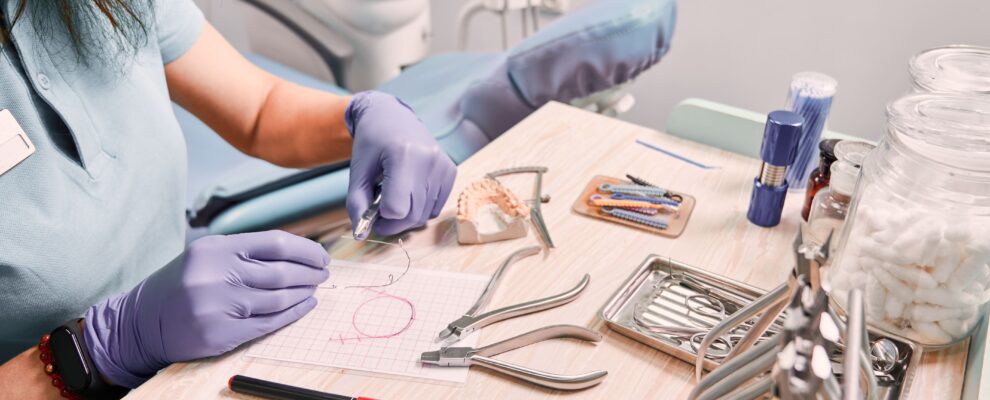The Latest Advancements in Oral Surgery 2024

Oral surgery has drastically evolved over the last few years, with ongoing developments further enhancing this field all the time. As we step into 2024, anticipate advanced methods and technologies improving patient comfort, refining aesthetic results, and accelerating recovery durations. Discover what’s upcoming, from innovative sedation practices, cosmetic and restorative dental procedures, streamlined recovery approaches to the application of cutting-edge technology!
What’s New in Oral Surgery Sedation
The landscape of oral surgery is set to transform significantly in 2024, enhancing the comfort of patients and reducing anxiety. One significant leap in technology is the introduction of the digital sedation monitor. This modern device continually assesses a patient’s vital signs, anxiety levels, and consciousness state during surgery, leading to individualized sedation dosing and precise anesthesia.
A noteworthy development in oral surgery techniques is needleless anesthesia delivery, predicted to revolutionize the patient experience. This novel technique eradicates the fear-inducing needles, thereby ensuring a more relaxed surgery process for patients.
In conclusion, the enhancements in sedation are targeted towards amplifying patient comfort, minimizing anxiety, and tailoring the anesthesia delivery. By embracing these cutting-edge technologies and methodologies, oral surgery in 2024 promises a more patient-focused, anxiety-free experience.
A New Look at Cosmetic Oral Surgery
The field of cosmetic dentistry is set to witness numerous technological breakthroughs promising enhanced precision and aesthetic results. The most significant among these is the rise of digital smile design. This cutting-edge tool uses 3D imaging to create a virtual model of the patient’s mouth, thus enabling a clear visual representation of the expected results. It offers a platform to fine-tune treatment plans before the actual procedures, a revolutionary advantage.
Further, laser technology is revolutionizing teeth whitening and gum contouring procedures. Compared to traditional methods, which can cause discomfort and may not yield immediate results, this advanced equipment promises faster outcomes, fewer side effects, and a more comfortable experience.
The future of cosmetic dentistry shines brightly, carrying forward a promise of superior precision, heightened aesthetics, and enhanced patient comfort. The innovations aim to provide remarkable results, while making the treatment experience less daunting and more pleasant. Emphasizing the continued growth and innovation in oral surgery, we envision a future where oral healthcare moves beyond simple problem-solving. It becomes a pathway to ensure a pain-free and seamless journey towards the perfect smile.
Cutting-Edge Restorative Surgery Techniques
As we get into the new year, we can look forward to groundbreaking strides in restorative dentistry, altering the approach oral surgeons use to treat and rehabilitate oral health. For example, bioactive materials are arising as transformative technologies in the realm of dental implants and fillings. Unlike traditional substances, these bioactive versions engage with the body, stimulating natural recovery and facilitating stronger, healthier teeth.
Further promising improvements are being witnessed in the use of digital surgical guides. These sophisticated tools, fashioned using 3D imaging, act as precise navigational aids for complex oral surgeries. They enhance surgical precision, markedly increasing the success rate for detailed procedures, such as dental implant placement.
Looking to the future, the embrace of these advancements suggests a paradigm shift in restorative dentistry. The amalgamation of bioactive materials and digital surgical guides streamlines oral surgical procedures, promising superior precision and enhanced patient outcomes.
New Options for Better Oral Surgery Recovery
Significant transformations in the healing process following oral surgery are also on the horizon, mainly through the introduction of innovative biopharmaceuticals. These are set to revolutionize the way post-operative pain is controlled. Their broader aim extends to accelerating the recovery process, thereby reducing the duration of a patient’s incapacitation post-oral surgery.
Supplementing pain management, the healing process is predicted to be amplified by deploying personalized recovery strategies. These are engineered employing data-backed predictive analysis, homing in on an individual’s specific recovery needs. Consequently, patients can anticipate a recovery regimen meticulously curated for them, keeping in view their overall health, the intricacy of the surgery, and their personal healing response. This is poised to facilitate a swift reinstatement of normal function, thereby diminishing the surgical procedure’s disruption on the patient’s routine.
These progressive advancements in oral surgery recovery protocols signify a decreased dependency on post-operative medications. This is a critical progression as it curtails potential side effects and hazards tied to prolonged medication use. In addition to this, it is anticipated to cut down the total healing period, thus alleviating patients’ life interruptions and enabling them to return to their usual activities more promptly.
High-Tech Tools: AI and 3D Imaging
AI’s advancement and the emergence of 3D imaging have stirred considerable excitement for oral surgery prospects in 2024. AI’s incorporation into oral surgery offers potential impacts ranging wide and far. Among these, its role in oral condition diagnosis stands out. By analyzing radiographic images with high precision, AI helps mitigate the chances of human error and aids in creating more successful treatment plans, thereby enhancing patient results.
Meanwhile, 3D imaging marks a significant shift in oral surgery, with the potential to transform preoperative planning and intraoperative guidance. It presents an in-depth view of oral structures, leading to accurate evaluations and a safer, more accurate surgical procedure, minimizing risks.
These technological breakthroughs promise a vastly improved future for oral surgery, fostering superior patient care and more positive surgery results. As we approach 2024, the combination of AI and 3D imaging in oral surgery presents an exhilarating prospect. It signifies the potential for better surgical precision, swifter recovery times, and overall, a transformation in patient care within oral health.
